Review: 2013 Mazda CX-5 Sport

After I reviewed a Mazda that’s no longer being made, I decided that perhaps my next Mazda review ought to involve a vehicle that’s actually available for purchase. We’ve experienced Jack Baruth’s impressions of throwing the CX-5 around Laguna Seca and Brendan McAleer’s extensive review of the optioned-up CX-5 Grand Touring, and now I’m going to share my experience of putting the base CX-5 Sport through the meat-grinder of a weekend enforcing discipline at a far-from-civilization 24 Hours of LeMons race.
My plan: pick up the CX-5 at LAX on Thursday, meet some friends for dinner in Los Angeles, drive 133 miles north to Merle Haggard country, use the CX-5 to haul race gear around Buttonwillow Raceway Park, and then go back to LAX. This being a 24-hours-straight race, I figured I might have to nap in my vehicle instead of driving the 15 miles to and from the Bedbugge Inn, which made the CX-5 seem a more practical choice than, say, a Miata. So, I got on the horn to the Mazda PR guys and demanded a CX-5 Sport, a case of Brass Monkey, and the keys to the JDM ’82 Cosmo in the magical basement below Mazda USA headquarters. All I got was the CX-5, which I then drove around Los Angeles looking to recreate the photograph from the cover of Double Nickels On the Dime (sadly, State Route 11 became part of I-110 in 1981, so the shot above is the best I could do).
No problem, though; I had a large selection of Los Angeles music to play through the CX-5’s AUX jack, starting with (pre-Hagar) Van Halen and then right into X, Ice-T, War, and Fear. The audio system in this car pumps out some excellent bass and features digital controls orders of magnitude less maddening than most. However, the USB jack in mine was on the fritz (by holding pressure on the connector I was able to give my USB-charging phone enough juice to stay alive) and the location of the 3.5mm AUX jack seems calculated to break and/or get packed with Doritos residue. I’d just fix that stuff with a buck worth of parts and a soldering iron, were I to own this vehicle, but I’m betting most owners won’t be willing to do that.
The Sport’s interior is all nondescript-but-competent plastic and cloth, of the sort that doesn’t feel particularly expensive but also doesn’t leave a weird petrochemical residue on your fingers (see: every Chrysler-built rental car made between 1981 and the reign of Marchionne). Overall, very pleasant interior, something most could live with in a daily driver for… well, nobody can say how many miles the CX-5 ought to be good for. As this photograph shows, the view out the rear quarter windows is pretty bad, so you’ll be as dependent on your mirrors as the driver of a Value Van.
I headed to downtown Los Angeles, to have some refreshments with former LeMons judge Jonny Lieberman.
During the course of our conversation, it occurred to me that most of Repo Man was filmed in downtown LA. Naturally, we set out to find some of the locations that Alex Cox chose for what I consider to be the greatest car movie of all time. I was reasonably sure that the scene in which J. Frank Parnell dies of radiation poisoning from the aliens in the trunk of the Malibu was filmed very close to our watering hole…
Sure enough, 544 Mateo Street was just a few blocks away.
I wanted to shoot the Mazda at more Repo Man locations, but I had to get to Buttonwillow (where, in a meta- Plate O’Shrimp Moment, a LeMons team showed up with a CRX driven by J. Frank Parnell and converted to full Repo Man ’64 Malibu specs).
But I’ll be heading back to Los Angeles when we do the Arse Freeze-a-Palooza race in Chuckwalla, and I’ll be sure to shoot some car photos at the Repo Yard… plus maybe a few at some Double Indemnity locations.
Heading north on I-5, I soon found myself climbing up the steep grade to the Grapevine (of “Hot Rod Lincoln” fame). I’ve driven this route many times, as those who followed my 1965 Impala Hell Project series know, in vehicles ranging on the power-to-weight spectrum from an unregisterable ’83 Sentra running on three cylinders to a ’68 Mercury Cyclone with souped-up 351 Windsor engine, and the CX-5 Sport’s 155 horsepower/150 lb-ft-o-torque was sufficient to keep the speed up even on the toughest slogs of the Grapevine. This car had the six-speed manual transmission, however, and so I can’t say whether the slushbox would have shifted at the right moments to keep the revs up. Lose momentum on the Grapevine without big torque and you’ll find yourself trapped for eternity in the slow lane with the octogenarians in their Celebrity Eurosports.
Some might say that 155 horses isn’t enough for 3,300 pounds, but then you might as well ask why you need a truckish-looking car with big ride height instead of the minivan that would probably serve your needs— if you’re looking for the fuel-economy/cargo-capacity combo that CUV shoppers look for— better. Wait, did I really say that? Anyway, I found myself spinning the engine to redline in every gear on freeway onramps, which is a worthwhile tradeoff for fuel economy that hovers around 30 miles per gallon (more on that later).
I wouldn’t feel comfortable hurling this thing through the Corkscrew, Baruth-style, but that’s just because my mediocre-at-best track skills coupled with the feeling of height in this car would freak me out too much. The two-wheel-drive CX-5 feels very car-like during sub-11-tenths driving maneuvers, and that’s what matters to those who want truck-esque macho lines without Peterbilt-grade handling.
One of the things I like about 21st-century Mazdas is the lack of gingerbread-for-its-own-sake complexity in the instruments and controls. Drilling down through endless nested menus on a touch-screen is fine for a smartphone, but let’s just say that the world’s best user-interface software engineers don’t work for car companies and leave it at that. Here we have a a couple of legible gauges and a little display screen with relevant information.
Same goes for the climate controls. They’re a bit dated-looking, but they work a lot better than their similar-looking 1990s ancestors. Of course, I’d be willing to sacrifice a lot of functionality in order to have a retro-futuristic Mars Base Style cockpit, with all the wildest features of the Mitsubishi Cordia Turbo and Subaru XT Turbo instrument panels, but the Japanese seem to have lost the ability to design such masterpieces in our new century.
After dropping off my stuff at the Scabies-n-Domestic-Violence Motel in the meth-and-lot-lizards universe that is the Buttonwillow highway oasis, I proceeded to the third annual Arse Sweat-a-Palooza 24 Hours of LeMons. At this point, my memories become a jumble of 1959 Humber Super Snipes, Olds Diesel-powered Corvettes, dust, and fatigue. Around the paddock, back to the motel, back to the track. Repeat, endlessly.
So, most of my driving of the CX-5 took place under conditions of hallucinatory levels of exhaustion, on construction-pocked stretches of I-5 populated by aggressive drunks in Ford Excursions. I think it’s a measure of the ease of driving the CX-5 that it was always easy to pilot the thing under such sub-sub-optimal conditions.
I didn’t come close to overwhelming the Mazda’s cargo capacity; it inhaled boxes of penalty-box supplies and my suitcases with ease. You don’t get as much room for your crap as in a minivan, but it beats the space of the Mazda3 hatchback by quite a bit and it doesn’t carry the grim cultural baggage of minivan ownership.
So, it’s pleasant to drive, looks pretty good, and appears to be well built. My only substantial complaint about driving this car is the hyper-touchy brake pedal; the brakes appear to have been designed for the application of a single dainty toe wielded by Twiggy (however, keep in mind that I’ve been spending a lot of time behind the wheel of a primitive steel box on wheels with manual drum brakes that require Paul Bunyan-grade force for ordinary stops) and I came close to detaching my retinas during a few stops. You’d get used to it after a few days.
I did get the chance to take the CX-5 onto a race track, but I was scanning the (yellow) weeds for lost (yellow) transponders and didn’t crack 20 MPH. That means I can’t indulge in any table-pounding tirades about understeer at the limit.
The tallness of the CX-5 tends to lead to a certain amount of highway wandering when high winds start kicking up the Tulare dust. This might lead to some nervous moments once the suspension gets a bit loose, but that’s many years down the line.
I wanted to pull off a door panel and take a look at the hidden connectors, in order to see how much low-bidder hardware Mazda might have installed in order to save a few yen. I didn’t have time for that, what with the 136 bad-driving LeMons teams I had to keep under quasi-control, but what I found under the hood looked pretty decent.
One quick litmus test I like to give new vehicles is a glance at the battery connectors, because you can bet that any car company that saved four cents per unit with a crude stamped-steel battery connector will have cut corners in a lot of places you can’t see. Mazda uses a no-frills-but-sturdy connector that ought to last through all the battery changes the car will get during its lifetime.
After packing up the race gear, I headed back to Los Angeles to catch a Denver-bound 737. Filling the tank, I came up with 27.6 miles per gallon for a trip that was equal parts stop-and-go traffic and high-speed highway driving, with 97-degree temperatures and the AC on full blast most of the time. Mazda claims 26 city/35 highway for this car, so my results seemed about right. If my way of life mandated a CUV, would I buy this one for the as-tested MSRP of $20,695? Short answer: yes.

Murilee Martin is the pen name of Phil Greden, a writer who has lived in Minnesota, California, Georgia and (now) Colorado. He has toiled at copywriting, technical writing, junkmail writing, fiction writing and now automotive writing. He has owned many terrible vehicles and some good ones. He spends a great deal of time in self-service junkyards. These days, he writes for publications including Autoweek, Autoblog, Hagerty, The Truth About Cars and Capital One.
More by Murilee Martin
Latest Car Reviews
Read moreLatest Product Reviews
Read moreRecent Comments
- ToolGuy 9 miles a day for 20 years. You didn't drive it, why should I? 😉
- Brian Uchida Laguna Seca, corkscrew, (drying track off in rental car prior to Superbike test session), at speed - turn 9 big Willow Springs racing a motorcycle,- at greater speed (but riding shotgun) - The Carrousel at Sears Point in a 1981 PA9 Osella 2 litre FIA racer with Eddie Lawson at the wheel! (apologies for not being brief!)
- Mister It wasn't helped any by the horrible fuel economy for what it was... something like 22mpg city, iirc.
- Lorenzo I shop for all-season tires that have good wet and dry pavement grip and use them year-round. Nothing works on black ice, and I stopped driving in snow long ago - I'll wait until the streets and highways are plowed, when all-seasons are good enough. After all, I don't live in Canada or deep in the snow zone.
- FormerFF I’m in Atlanta. The summers go on in April and come off in October. I have a Cayman that stays on summer tires year round and gets driven on winter days when the temperature gets above 45 F and it’s dry, which is usually at least once a week.




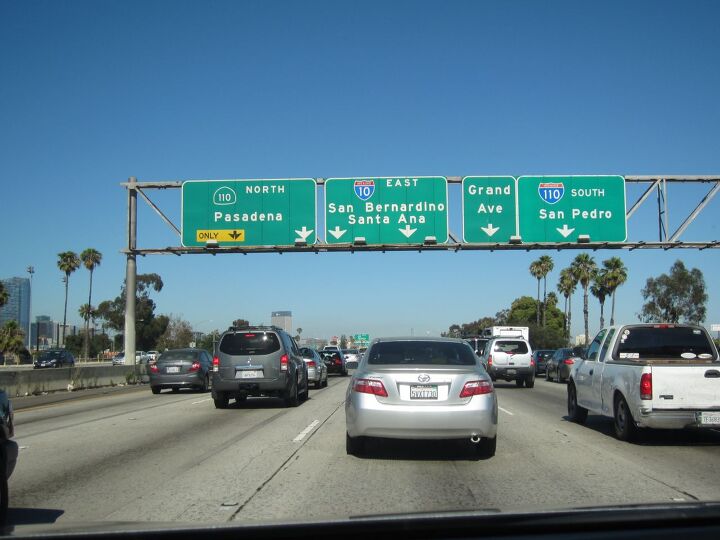

























































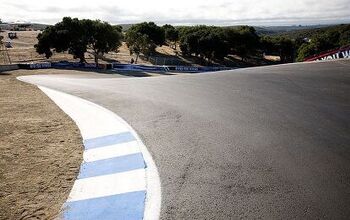


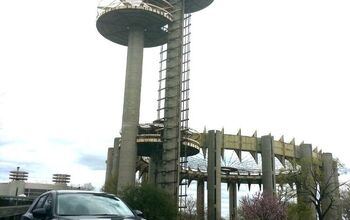



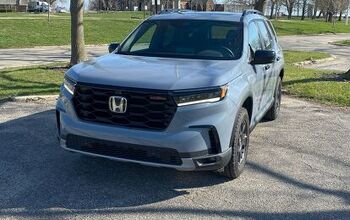







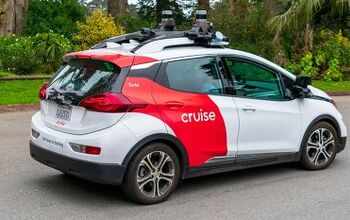

Comments
Join the conversation
Liked this review and eventually they reached the uk. I ordered a sports nav manual awd diesel 175bhp and will see it in around 6 months! Selling well indeed....
I was considering one of these as a replacement for my wife's V6 Vue but have to agree with previous commentors that $30k+ is highway robbery for a crossover with a wheezy four cylinder. Looks like a used turbo cx-7 is back in my crosshairs.